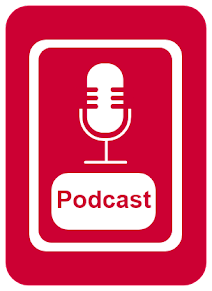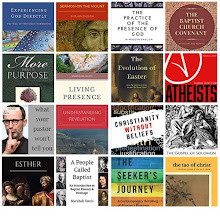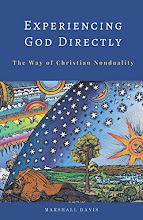We attend worship in Florida during our annual spring vacation. Because we are in one location for an extended period, we try to find one church we can return to every Sunday. This year I did an internet search of local churches and found one that looked like it might fit the bill. We tried it on Palm Sunday. Then we returned on Easter and the following Sunday. We will go back next Sunday.
We are enjoying this congregation, yet it feels like we have traveled back in time. There are none of things we usually see in church services these days. No overhead screen projecting the lyrics to contemporary songs. No praise team or worship band. Just traditional hymns sung from a hymnal and accompanied by a pianist... and a flutist!
I love traditional hymns. The abandonment of the great hymnody of the faith for contemporary worship songs is one of the worst trends in Christian worship in my opinion. So I am enjoying the hymns. But to be honest I could do without this church’s fondness for the music of the Gaithers. Too schmaltzy for me.
Not many people come to worship in this church. Usually about 45 according to the pastor, and they are almost all grayheads ... like us. On Easter there were more attenders and a few grandchildren scattered in the pews. But the next Sunday it was back to normal. This is fine with me. I prefer micro-churches to megachurches.
The people were friendly and welcoming. Our first Sunday they gave us a welcoming bag of gifts to take home. The pastor made a point of greeting us before the service. He is an octogenarian who wears a traditional black pulpit robe with doctoral bars on the arms.
His sermons are well-crafted and well-delivered, although a little longer than most sermons these days. That also is fine with me. Micro-sermons are another unfortunate trend these days. Yet I have the impression that this old preacher has pulled these sermon “out of the barrel,” as we preachers say. I think he is re-using sermons originally written during the last half of the twentieth century.
For example he started his Palm Sunday sermon lamenting John Lennon’s famous quip that the Beatles were more famous than Jesus. Then he gave a sermon illustration about the movies of Alfred Hitchcock. In every sermon there are numerous quotes from preachers, authors, athletes and statesmen from decades ago. But none from contemporary public figures.
All the sermons we have heard in this church address the personal needs of private spirituality. That certainly has its place. But it is also important for sermons to be current. Theologian Karl Barth said that a Christian preacher ought to preach with the newspaper in one hand and the Bible in the other. To be relevant the church needs to address present-day moral, social and spiritual conditions.
These are dangerous times for our nation and Christianity. Christian nationalism is on the rise. Democracy is in danger. The earth’s climate and animal population are threatened. The human species is endangered. American society is being poisoned by bigotry and intolerance.
The integrity of the Christian church and the gospel has been compromised. The church has lost its way. It has abandoned the message of Jesus. It has forgotten the message of the Hebrew prophets. Prophetic preaching and deep spirituality are needed today. Yet most churches are content to drift with the cultural current or retreat into the past.
This is not the time for nostalgic Christianity. It is not a time to retreat into the safety of an imagined past. It was not safe to be a follower of Jesus in the first century, and it is not safe to be a follower of Jesus in the twenty-first century. Religious intolerance is a danger in all centuries and certainly in our century.
I like this Florida church. I like the pastor. I like the music (mostly), and I like the congregation. They are all nice. This type of religion is comfortable. But safe spirituality is not what is needed today. Such old-time religion was not good enough for Jesus, and it is not good enough for me. I could not be part of such a church for longer than a vacation.
I don’t mind taking a brief respite from the “dangers, toils, and snares” of prophetic and contemplative Christianity. Just like I do not mind taking a break from New Hampshire snowstorms to enjoy the Florida sunshine for a while. But all vacations must come to an end. The challenges of our current age are too important to ignore for longer than a spring vacation.















